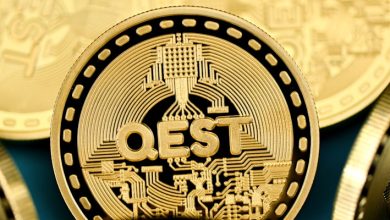Recent Trends in Decentralized Finance (DeFi)

- Introduction to Decentralized Finance (DeFi)
- Key Components of Decentralized Finance (DeFi)
- Rise of Decentralized Exchanges in DeFi
- The Role of Stablecoins in DeFi Ecosystem
- Challenges and Risks in Decentralized Finance (DeFi)
- Future Outlook for Decentralized Finance (DeFi)
Introduction to Decentralized Finance (DeFi)
Decentralized Finance (DeFi) has been gaining significant traction in the financial world in recent years. DeFi refers to a system where financial products are built on public blockchains, making them open and accessible to anyone with an internet connection. This innovative approach to finance eliminates the need for traditional intermediaries such as banks or brokers, allowing users to interact directly with their assets.
One of the key features of DeFi is the use of smart contracts, which are self-executing contracts with the terms of the agreement directly written into code. These smart contracts automate processes that are typically handled by intermediaries, reducing the risk of human error and increasing efficiency. This technology also enables the creation of various financial products, including lending platforms, decentralized exchanges, and prediction markets.
By leveraging blockchain technology, DeFi offers users greater transparency, security, and control over their finances. Participants in the DeFi ecosystem can access a wide range of services without needing to trust a central authority. This decentralized nature of DeFi also opens up new opportunities for financial inclusion, allowing individuals who are underserved by traditional banking systems to participate in global financial markets.
Key Components of Decentralized Finance (DeFi)
Decentralized Finance (DeFi) has gained significant traction in recent years due to its innovative approach to traditional financial services. There are several key components that make up the foundation of DeFi, each playing a crucial role in the ecosystem:
- Smart Contracts: Smart contracts are self-executing contracts with the terms of the agreement directly written into code. They automate transactions and eliminate the need for intermediaries.
- Decentralized Exchanges (DEXs): DEXs allow users to trade cryptocurrencies directly with one another without the need for a centralized authority. This provides greater security and privacy for traders.
- Stablecoins: Stablecoins are cryptocurrencies pegged to a stable asset, such as the US dollar. They provide price stability and are often used as a medium of exchange in DeFi platforms.
- Lending and Borrowing Protocols: DeFi platforms offer decentralized lending and borrowing services, allowing users to earn interest on their crypto assets or take out loans without going through traditional financial institutions.
- Yield Farming: Yield farming involves staking or lending cryptocurrencies to earn additional tokens as rewards. It has become a popular way for users to maximize their returns in the DeFi space.
These key components work together to create a decentralized financial system that is open, transparent, and accessible to anyone with an internet connection. By leveraging blockchain technology and smart contracts, DeFi is revolutionizing the way we think about finance and paving the way for a more inclusive financial ecosystem.
Rise of Decentralized Exchanges in DeFi
The rise of decentralized exchanges (DEX) in the realm of Decentralized Finance (DeFi) has been a significant trend in recent times. These platforms allow users to trade cryptocurrencies directly from their wallets, without the need for a centralized intermediary. This shift towards decentralization has gained popularity due to its promise of increased security, privacy, and control over one’s assets.
One of the key advantages of decentralized exchanges is the elimination of a single point of failure, which reduces the risk of hacking or downtime. Furthermore, DEXs often offer lower fees compared to traditional exchanges, making them more cost-effective for traders. Additionally, decentralized exchanges are typically non-custodial, meaning users retain ownership of their funds throughout the trading process.
The rise of DEXs has also been fueled by the growing interest in decentralized finance applications, such as lending protocols, yield farming, and decentralized stablecoins. These platforms rely on decentralized exchanges to facilitate the trading of tokens used within their ecosystems. As a result, the success of DeFi projects is closely intertwined with the growth of decentralized exchanges.
Overall, the rise of decentralized exchanges in DeFi represents a shift towards a more transparent, secure, and efficient financial system. As the ecosystem continues to evolve and innovate, DEXs are likely to play an increasingly important role in shaping the future of finance.
The Role of Stablecoins in DeFi Ecosystem
Stablecoins play a crucial **role** in the DeFi ecosystem by providing a stable store of value **that** can be used to facilitate transactions and **secure** liquidity. These digital assets are pegged to fiat currencies like the US dollar, euro, or yen, **making** them less volatile compared to other cryptocurrencies **such** as Bitcoin or Ethereum. **Stablecoins** offer a reliable **means** of exchange within decentralized finance **platforms**, allowing users to hedge against price fluctuations **and** maintain the value of their assets **over** time.
One of the main advantages of stablecoins in DeFi is **their** ability to minimize **the** risk associated with **market** volatility. By using stablecoins, **users** can protect their investments **from** sudden price **swings** and ensure a more predictable **trading** experience. Moreover, stablecoins enable quick **and** efficient transactions on DeFi **protocols**, **making** it easier for users to access **lending**, borrowing, **and** other financial services **without** having to worry about **currency** fluctuations.
Another **benefit** of stablecoins in the DeFi ecosystem is **their** compatibility with smart contracts. These programmable **pieces** of code can be used to automate **various** financial **transactions**, such as **yield** farming, **liquidity** provision, **and** decentralized **exchanges**. By using stablecoins in conjunction with smart contracts, **users** can create **more** sophisticated **financial** instruments **and** unlock new **opportunities** for **earning** passive income **in** the DeFi **space**.
Challenges and Risks in Decentralized Finance (DeFi)
Decentralized Finance (DeFi) has gained significant popularity in recent years, offering innovative financial solutions without the need for traditional intermediaries. However, along with its many advantages, DeFi also poses several challenges and risks that users need to be aware of.
- Smart Contract Risks: One of the primary risks in DeFi is the vulnerability of smart contracts to bugs and security breaches. These decentralized applications (dApps) are built on smart contracts, which, if not properly audited, can lead to significant financial losses for users.
- Lack of Regulation: Another challenge in DeFi is the absence of regulatory oversight. While this provides greater freedom and accessibility, it also exposes users to potential scams, fraud, and market manipulation.
- Market Volatility: The decentralized nature of DeFi means that it is highly susceptible to market volatility. Price fluctuations, liquidity issues, and impermanent loss can all impact users’ investments and returns.
- Complexity and User Experience: DeFi platforms can be complex and challenging to navigate, especially for new users. The lack of user-friendly interfaces and clear guidelines can result in errors, lost funds, and frustration.
- Centralization Risks: Despite being decentralized in principle, many DeFi projects still exhibit centralization risks. This can include concentration of governance power, control over key infrastructure, and reliance on a few large players.
Overall, while DeFi offers exciting opportunities for financial inclusion and innovation, users must exercise caution and due diligence to mitigate these challenges and risks effectively.
Future Outlook for Decentralized Finance (DeFi)
The future outlook for decentralized finance (DeFi) appears promising as the industry continues to experience rapid growth and innovation. DeFi platforms offer a wide range of financial services without the need for traditional intermediaries, providing users with greater control over their assets and transactions.
One of the key trends shaping the future of DeFi is the rise of decentralized exchanges (DEXs), which allow users to trade cryptocurrencies directly with one another. This eliminates the need for a centralized exchange, reducing the risk of hacks and ensuring greater security for traders. As DEXs continue to gain popularity, we can expect to see more liquidity in the market and increased trading volumes.
Another important development in the DeFi space is the emergence of decentralized lending and borrowing platforms. These platforms enable users to lend out their assets and earn interest, or borrow assets by putting up collateral. This opens up new opportunities for individuals and businesses to access capital without going through traditional financial institutions.
Looking ahead, we can anticipate further advancements in DeFi technology, including improved scalability, interoperability, and user experience. As more developers enter the space and build innovative solutions, the DeFi ecosystem is likely to become even more robust and diverse. With the increasing mainstream adoption of cryptocurrencies and blockchain technology, DeFi is poised to play a significant role in shaping the future of finance.



